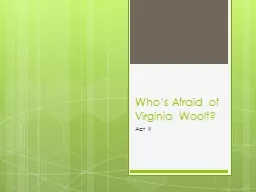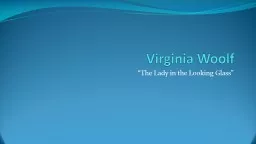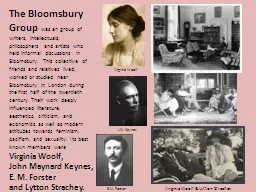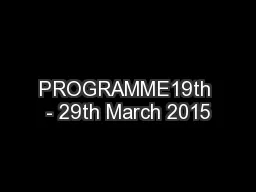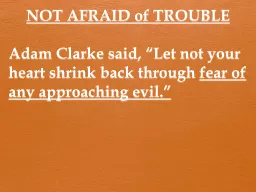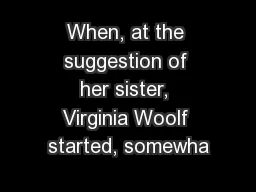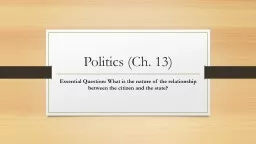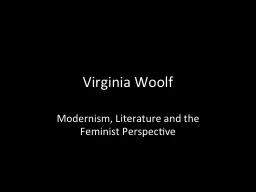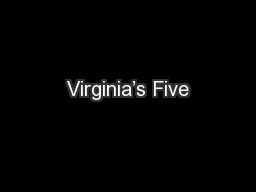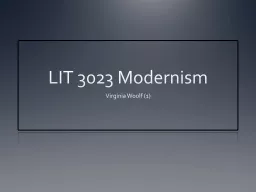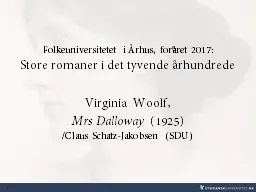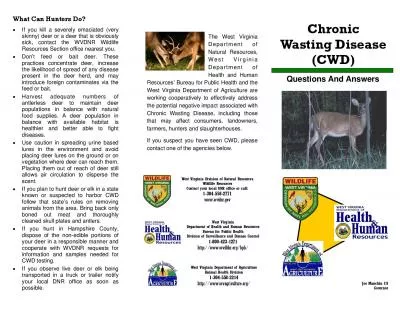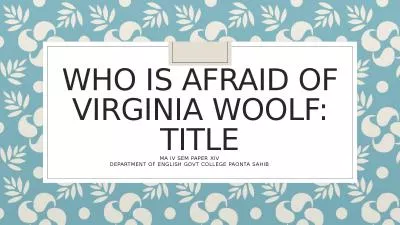PPT-Who’s Afraid of Virginia Woolf?
Author : myesha-ticknor | Published Date : 2015-09-17
Act III Act III Scene I Martha a woman full of desperation and selfpity We see her starved for affection Marthas worship of her father has turned into admitting
Presentation Embed Code
Download Presentation
Download Presentation The PPT/PDF document "Who’s Afraid of Virginia Woolf?" is the property of its rightful owner. Permission is granted to download and print the materials on this website for personal, non-commercial use only, and to display it on your personal computer provided you do not modify the materials and that you retain all copyright notices contained in the materials. By downloading content from our website, you accept the terms of this agreement.
Who’s Afraid of Virginia Woolf?: Transcript
Download Rules Of Document
"Who’s Afraid of Virginia Woolf?"The content belongs to its owner. You may download and print it for personal use, without modification, and keep all copyright notices. By downloading, you agree to these terms.
Related Documents

